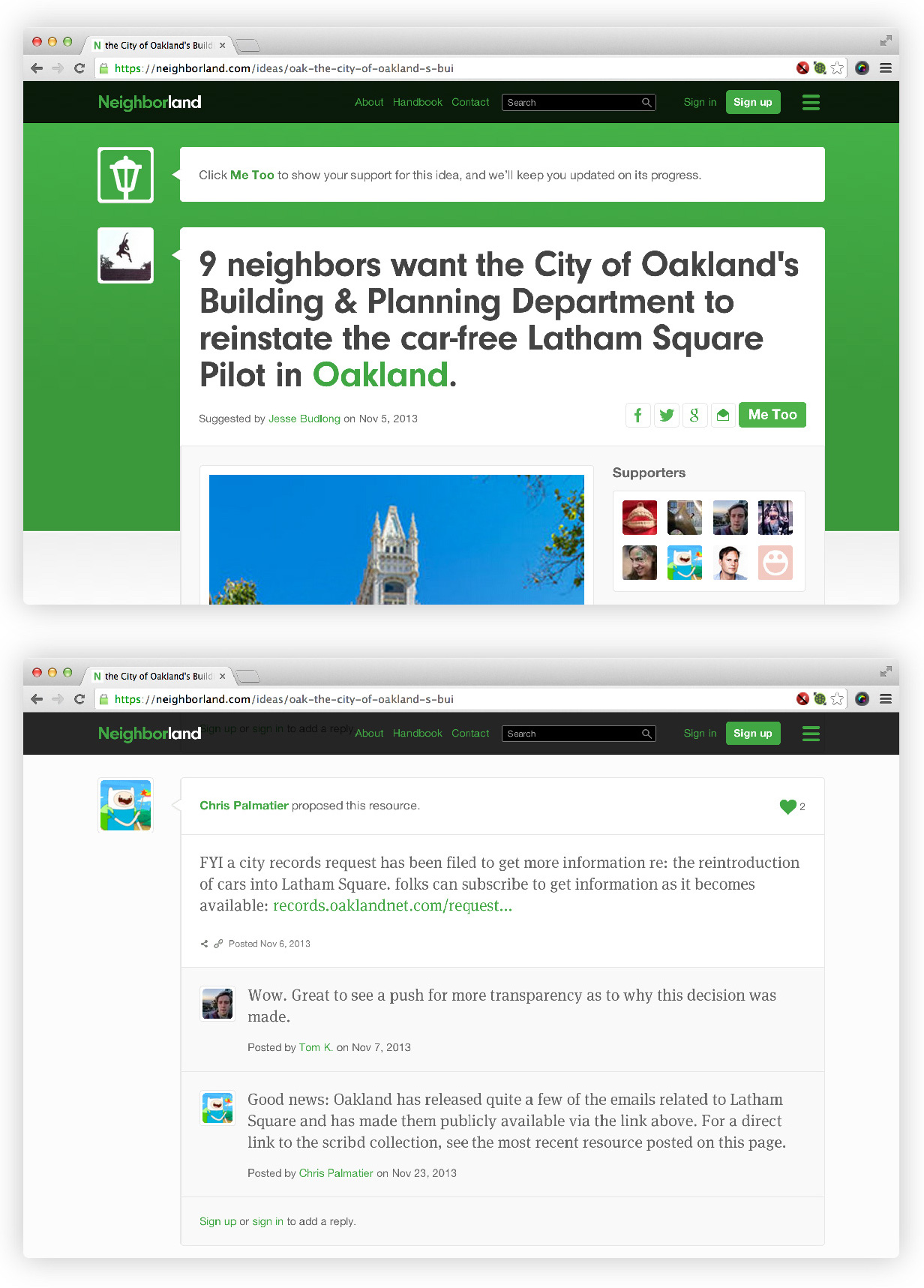NEIGHBORLAND
Neighborland was my first foray into the world of early-stage startups. I was employee one, doing design and front-end coding, working beside the CEO (literally) and CTO (figuratively, over Google Hangouts) from prototype through pilot, full launch, and first pivot. Three years of non-stop learning!

